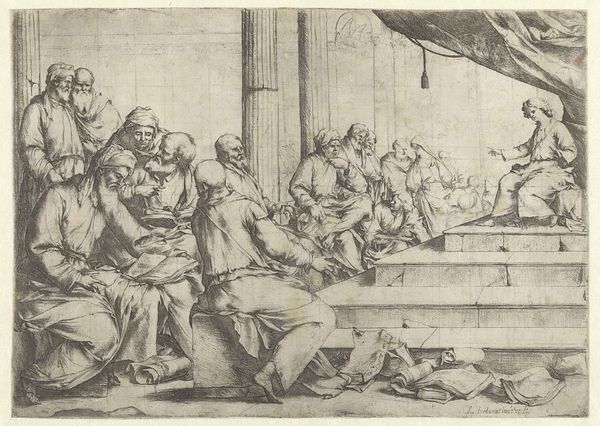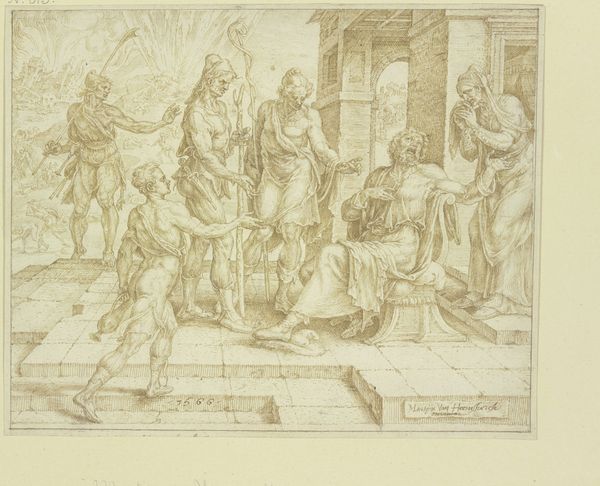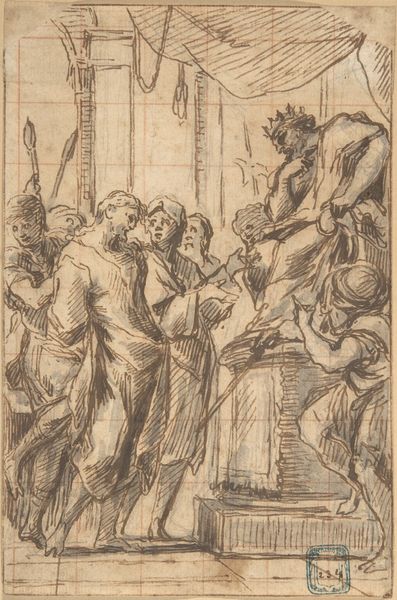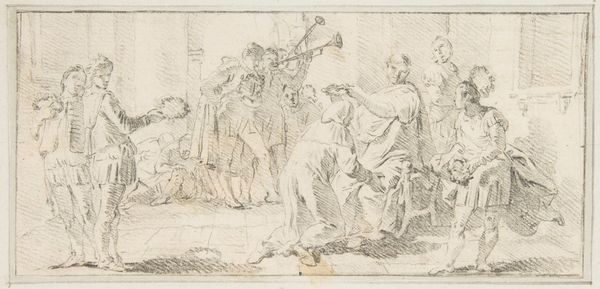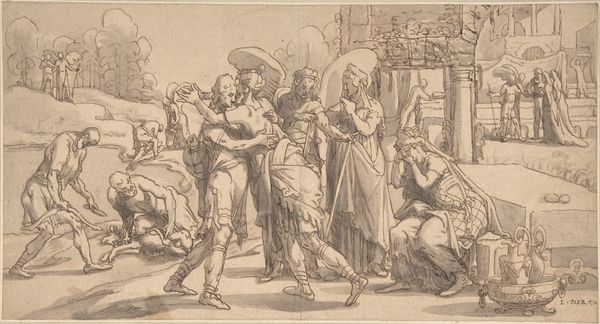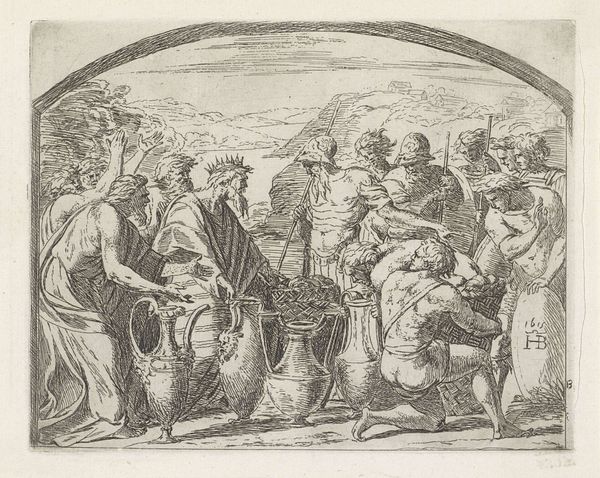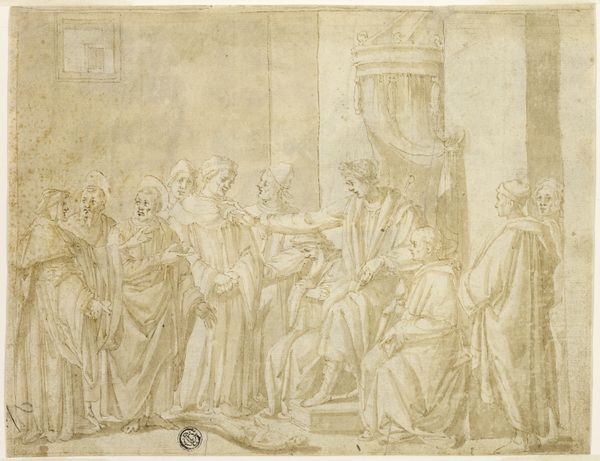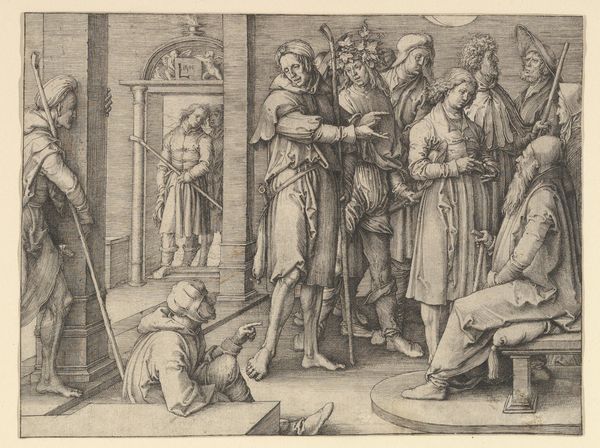
drawing, paper, ink, engraving
#
drawing
#
narrative-art
#
baroque
#
figuration
#
paper
#
ink
#
history-painting
#
engraving
Dimensions: height 356 mm, width 495 mm
Copyright: Rijks Museum: Open Domain
This print, depicting Christ and the adulterous woman, was made by Luca Giordano in the 17th century. It’s an etching, a process where a metal plate is coated with wax, and then the artist scratches an image into the wax with a needle. The plate is then bathed in acid, which bites into the exposed metal, creating lines. Giordano would have had to apply considerable skill, carefully controlling the depth of the etched lines to achieve the desired tonal range. This kind of print was very much a product of its time, a period of expanding print culture and market for art. The availability of relatively inexpensive prints allowed for wider distribution of images and ideas. So, while the subject matter is religious, the print itself is evidence of a changing social landscape, where art was becoming more accessible and commercial. It bridges the gap between the spiritual and the material, reminding us that even traditional subjects can be shaped by the technologies and economies of their time.
Comments
No comments
Be the first to comment and join the conversation on the ultimate creative platform.

